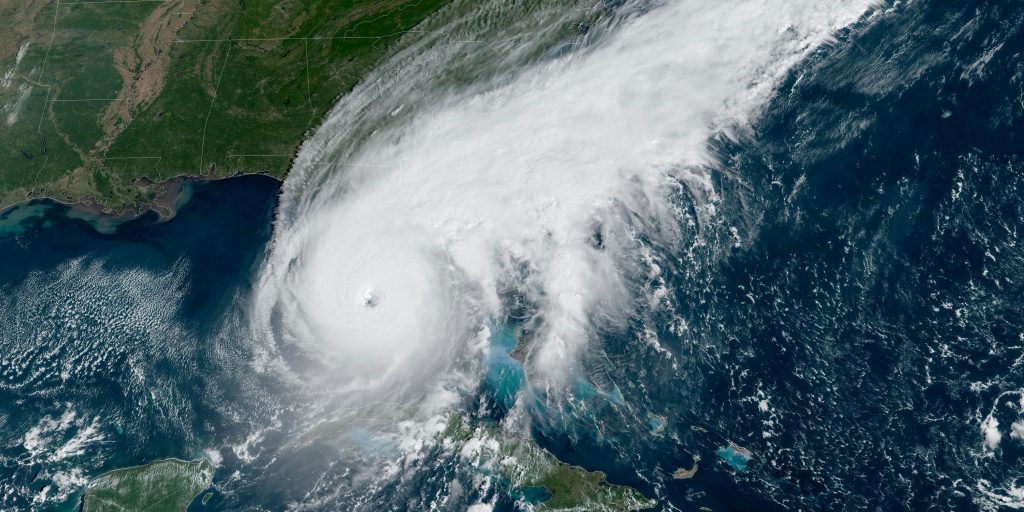Hurricane Ian leaves swath of destruction in Florida, millions without power in its wake
With 150-plus mile-per-hour winds, Hurricane Ian swept ashore in Florida Wednesday as one of the strongest storm systems to make landfall in the nation’s history, leaving a swath of destruction in its path and cutting power to more than 2.5 million homes and businesses. In the aftermath, tens of thousands of utility crews are scrambling to bring the grid back online.
“Hurricane Ian has forever altered the lives of so many of our fellow Floridians and we recognize the road to recovery will be long and challenging,” said Eric Silagy, chairman and CEO of Florida Power & Light (FPL), which serves much of the affected area. “We understand how difficult it is to be without power and our dedicated men and women will continue to work around the clock until every customer’s electricity is back on. That said, the catastrophic nature of this storm means that we may need to rebuild parts of our system in Southwest Florida, which will take time.”
The Florida power company has a standing emergency workforce of 20,000 people, including mutual assistance from 30 states, according to a statement. Crews are working around the clock, assessing damages via drone flights and mobilizing from 37 staging sites.
“(Florida Power & Light) also has specialized crews working to clear downed trees, debris and other damage to allow lineworkers to gain access and restore service or, in some cases, begin the rebuilding process. While FPL works to restore power safely and as quickly as possible, some homes and businesses may have suffered damage that makes them unable to safely accept power,” reads a statement issued by the power company.
This morning, President Joe Biden approved Governor Ron DeSantis request that a Major Disaster Declaration be declared. The declaration authorizes the Federal Emergency Management Agency (FEMA) to provide individual assistance for survivors in nine counties—Charlotte, Collier, DeSoto, Hardee, Hillsborough, Lee, Manatee, Pinellas and Sarasota counties, according to a statement from FEMA. It also provides 100 percent federal funding for debris removal and emergency, life-saving measures for 30 days in those counties.
At the local level, communities across Florida awakened Wednesday to historic destruction and flooding.
“Folks, we are in the midst of one of the most catastrophic flooding events in the history of the city of Kissimmee,” City Manager Mike Steigerwald said in a Facebook video. “I’m not saying that to alarm you, but it’s just the facts. The most important message, that I think is important for everybody to understand, is that it is a dangerous situation out there. There are sections of the city that are impassable; that are underwater.”
Steigerwald noted that rescue operations are underway via high water rescue vehicles. Besides providing updates, emergency managers are leveraging digital avenues to broadcast public service announcements.
In Fort Myers, which has borne the brunt of the storm so far—bridges have been washed away, streets have been flooded and infrastructure has been decimated—first responders are actively working to rescue those who’ve been trapped.
“We are out there trying to do emergency work, trying to save lives, mitigate risk and take care of these hazards—we have people who need help. Please, we need you all to stay inside. There is a curfew going on. We can’t have people on the roads, we can’t have people trying to assess and see the damages. That is our job. Allow us, as essential workers, to do our job,” said Fort Myers Fire Chief Tracy McMillion in a video message. “Help us out, don’t go out. Please, just stay home.”
Meanwhile, while the National Hurricane Center has downgraded Ian to a tropical storm, life-threatening conditions including storm surge persist. In Flagler County, which is on Florida’s east coast, curfew and evacuation orders were issued this morning.
“We urge residents within the Woodlands neighborhood to leave the area due to updated expectations of significant flooding of your neighborhood streets, with the potential to impact your home,” said Jonathan Lord, emergency management director for the county. “Additionally, as the flooding progresses it is possible that emergency vehicles will no longer have access to your neighborhood.”
Looking to this weekend, there’s concern the storm could regain strength after passing back out to sea and before making a second landfall in Georgia and South Carolina.




















